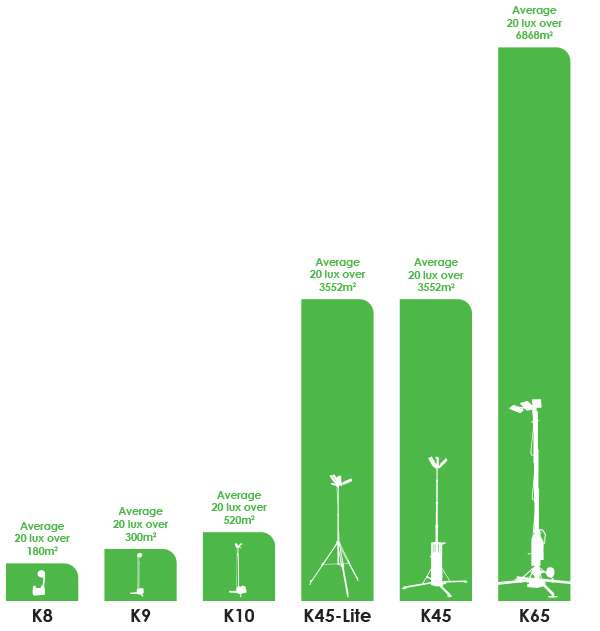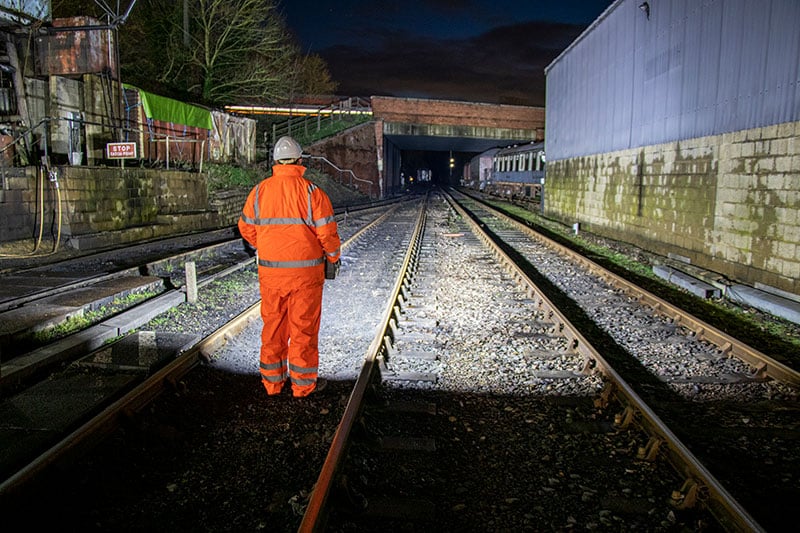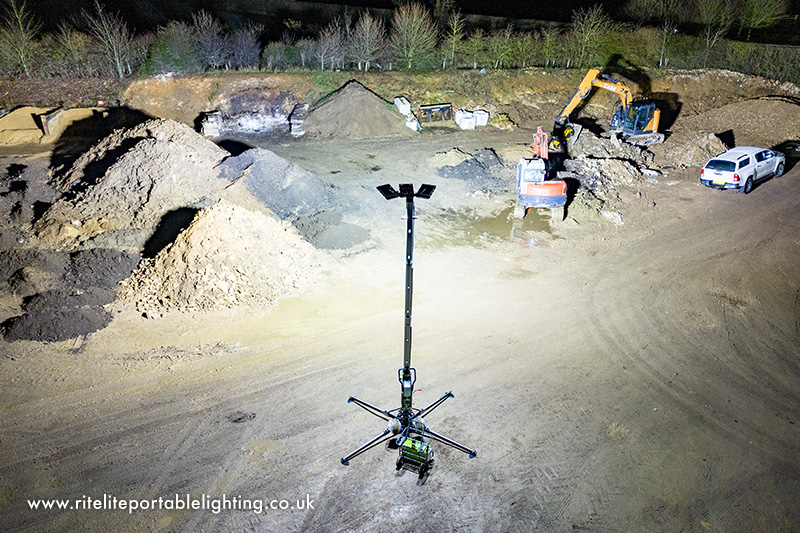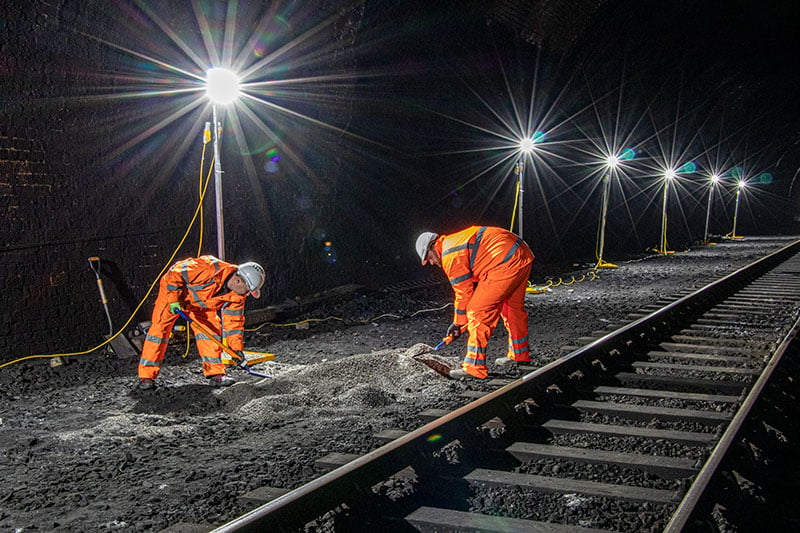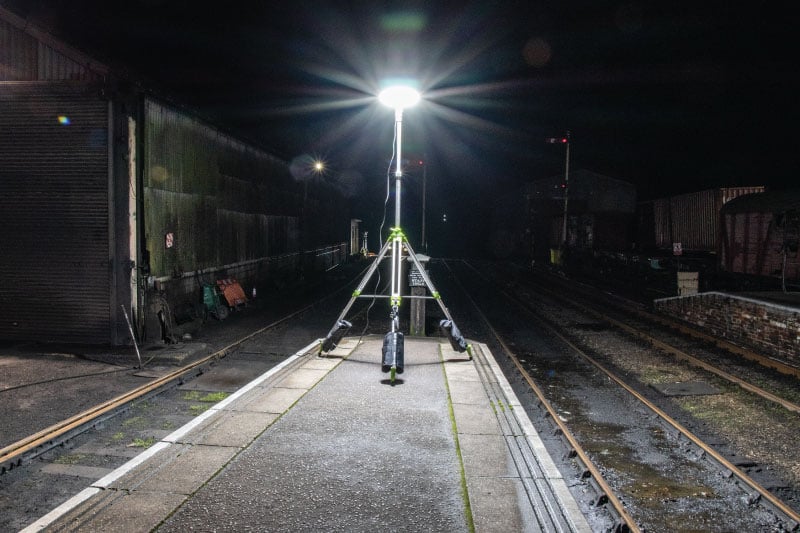RITELITE BEAM CONTROL
converting lumens into useful light
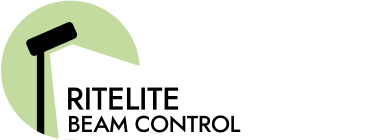
“Lumens are nothing without control”
Ritelite’s R&D team have been designing portable and mobile lighting products for over 34 years. We know that our customers need products that light up their work tasks fantastically, effectively and with as much power efficiency as possible.
We have been lighting designers through every lighting technological advancement from incandescent to halogen, to fluorescent, and now to LED lighting.

At Ritelite our philosophy is: “To provide the highest level of “useable light” to the widest range of work task situations.”
We understand our customers lighting requirements for a wide range of applications: from sports to industry to construction – where efficient, reliable, ultra-bright light is required.
We especially understand LED lighting technology and have developed our Beam Control concept to enable us to offer our customers the most efficient, light controlled range of portable and mobile LED lighting available.
Explaining the “Lumens myth” – what are lumens and why are they not so important?
More lumens = more light = better product?
WRONG! And this is why
Any lighting manufacturer will normally state how many lumens their product produces; essentially being how bright it is. Indeed lighting legislation worldwide requires manufacturers to give customers this information.
The dictionary definition of Lumens (symbol: lm) is the International System of Units (SI) derived unit of luminous flux, equal to the amount of light emitted per second in a unit solid angle of one steradian from a uniform source of one candela – in simple terms the light power emitted by a light source.
A product can produce on paper a lot of lumens, for example a laser which is very bright but has a very tightly controlled beam. This is great if you want to illuminate 1 square mm at 5km distance, but if you want to use it for other applications then it would be totally useless.
It is therefore important not only to look at how many lumens (how much light) a product produces but also how much light arrives on a working area – this is measured in lux.
The dictionary definition of Lux (symbol: lx) is the International System of Units (SI) derived unit of illuminance, measuring luminous flux per unit area. It is the amount of illumination provided when one lumen is evenly distributed over an area of one square metre – in simple terms how much light is hitting a surface over a square metre area.
Ritelite calls this “Useful light”
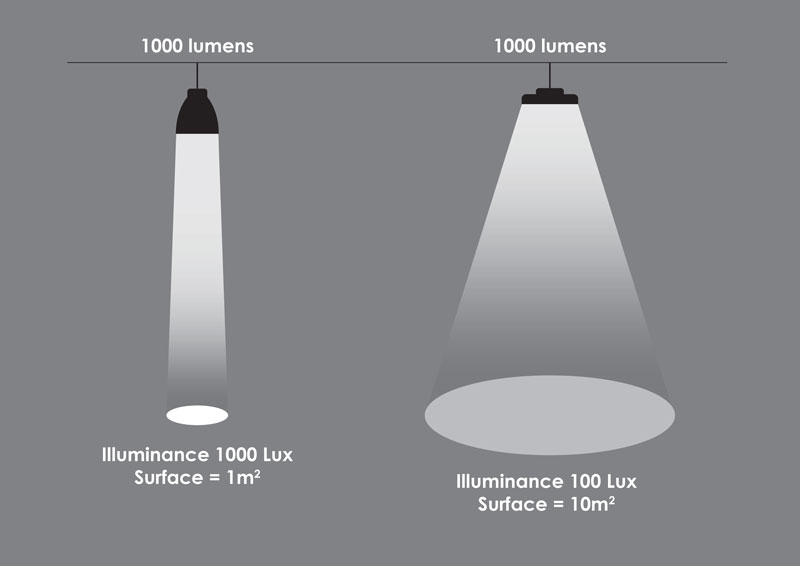
As lumens describe only the light emitted from the light source in any direction and also do not consider any losses in light due to lenses, diffusers etc, lumens are not relevant in terms of describing the level of illumination arriving on a work area of a given size and distance from the light source.
It is far more important to understand how much useful light (lux) a product gives a user; indeed international standards for safe illumination of working areas are only specified in lux.
Understanding how much lux a product illuminates, and thus how much light actually hits the ground to light up the area where the user is working or playing sport, or carrying out any other work activity, is therefore crucial for customers to identify the best product to meet their lighting requirements.

How does Ritelite Beam Control work?
Lumens, whilst a rough guide depending on manufacturer, are therefore not as useful as lux in understanding the right product for your application.
Controlling the light to ensure that you will have enough light for the length of time that you need it for to get maximum use and benefit from a product for your application is ultimately more important.
Ritelite’s Beam Control concept is based on controlling the light a product produces. This is unique to each product range, but the key elements are:
Example comparison between:
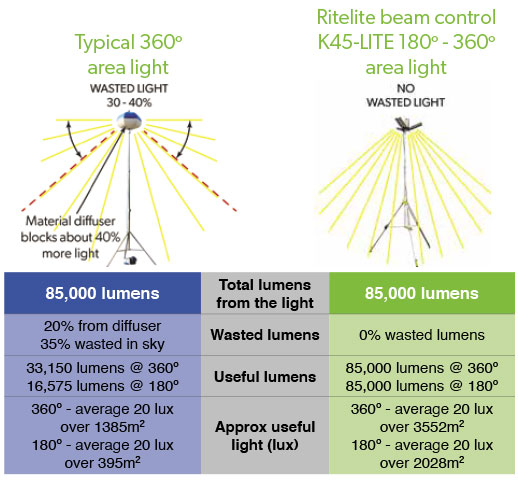
Beam Control ensures all the light is directed towards the required surface offering uniform light for training or working.
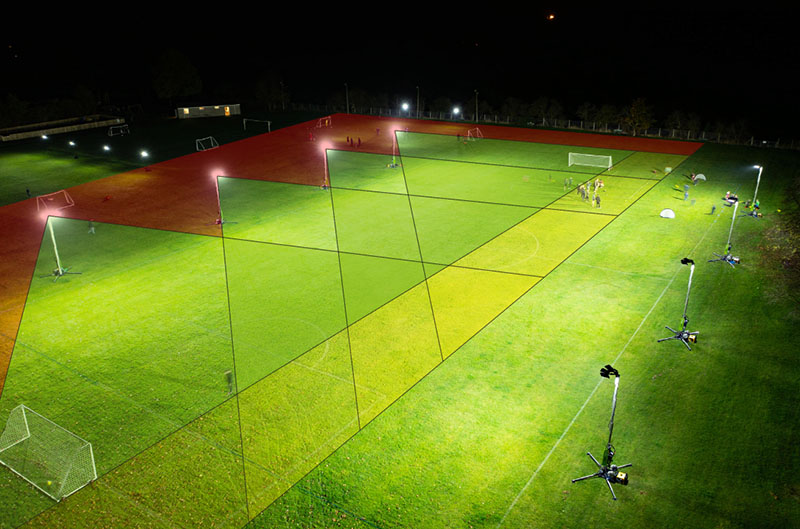
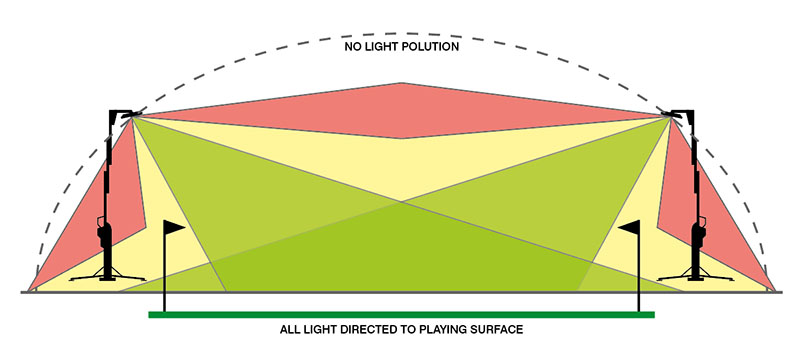
How many Lux are required?
General Site Use
Different tasks will require different levels of light. The HSE Lighting at work (hse.gov.uk) guidance recommends the following levels. Note as per the above text, lux is the measurement of useful light and the most useful measurement to look at when identifying light requirements for an application
From HSE guidelines View PDF Here
| Activity | Typical locations/types of work | Average illuminance (lux) 1x | Minimum measured illuminance (lux) 1x |
|---|---|---|---|
| Movement of people, machines and vehicles(a) | Lorry park, corridors, circulation routes | 20 | 5 |
| Movement of people, machines and vehicles in hazardous areas; rough work not requiring any perception of detail | Construction site clearance, excavation and soil work, loading bays, bottling and canning plant | 50 | 20 |
| Work requiring limited perception of detail(b) | Kitchens, factories assembling large components, potteries | 100 | 50 |
| Work requiring perception of detail(c) | Offices, sheet metal work, bookbinding | 200 | 100 |
| Work requiring perception of fine detail(d) | Drawing offices, factories assembling electronic components, textile production | 500 | 200 |
(a) Only safety has been considered, because no perception of detail is needed and visual fatigue is unlikely. However, where it is necessary to see detail to recognise a hazard or where error in performing the task could put someone else at risk, for safety purposes as well as to avoid visual fatigue, the figure needs to be increased to that for work requiring the perception of detail. The CIBSE Code for lighting 4 gives more information and recommendations based on scientific knowledge, practical experience, technical feasibility and economic reality.
(b) The purpose is to avoid visual fatigue; the illuminances will be adequate for safety purposes
(c) The purpose is to avoid visual fatigue; the illuminances will be adequate for safety purposes
(d) The purpose is to avoid visual fatigue; the illuminances will be adequate for safety purposes
The CIBSE Code for Lighting goes even further:
| Activity | Minimum maintained mean illuminance (1x) | illuminance uniformity (minimum/average) | Typical applications |
|---|---|---|---|
| Safe pedestrian movement in low risk areas | 5 | 0.25 | Industrial storage areas with only occasional traffic |
| Safe movement of slow vehicles | 10 | 0.4 | Open storage areas served by forklift trucks |
| Safe movement in medium risk areas | 20 | 0.4 | Vehicle storage areas, caontainer terminales with frequent traffic |
| Normal traffic | 20 | 0.4 | Road lighting in container terminals, marshalling yards |
| Very rough work | 20 | 0.25 | Excavation and site clearance |
| Rough work | 50 | 0.25 | Handling timber |
| Safe movement in high risk areas | 50 | 0.4 | Critical area within chemical plants, oil refineries etc |
| Normal work | 100 | 0.5 | Brick laying, carpentry |
| Fine work | 200 | 0.5 | Painting, electrical work |
Table 24.1 Illuminance recommendations for exterior workplaces. Source: The SLL Lighting Handbook, 2018
Sports Lighting
Different sports have difference lux guidance depending on levels of play. This will vary by country but the below figures can be used as a general guide.
Football Association Guidance for Lighting
The following table shows the lux level guidance given by the Football Association for different levels of play.
| Ground Grade / Step | League Level | Eave | Emin | Emin / Emax | Requires Testing | |
|---|---|---|---|---|---|---|
| Grade A (Step 1) | Conference | 250 lux | 100 lux | 0.25 | Every two years | |
| Grade B (Step 2) | Conference N & S | 180 lux | 100 lux | 0.25 | Every two years | 8 x Quad Pod units = 200 lux Eave |
| Grade C (Step 3) | 120 lux / 180 lux new* | n/a | 0.25 | Every two years | ||
| Grade D (Step 4) | 120 lux / 180 lux new* | n/a | 0.25 | Every two years | ||
| Grade E (Step 5-4) | 120 lux / 180 lux new* | n/a | 0.25 | Within 6 months of application | ||
| Grade F (Step 5) | 120 lux / 180 lux new* | n/a | 0.25 | Every two years | ||
| Grade G (Step 6) | 120 lux / 180 lux new* | n/a | 0.25 | Every two years |
RFU Regulations & Guidance for Lighting
The RFU Regulations for floodlight matches and recommendations for floodlit training activity are shown in the table below. RFU minimum requirements conform to CIBSE (Chartered Institute of Building Services Engineers) Lighting Guide 4.
| Level 2-5 | Level 6-12 | |||
|---|---|---|---|---|
| Matches | Training | Matches | Training | |
| Maintained Illuminance | 200 lux | 100 lux | 100 lux | 100 lux |
| Uniformity | 0.6 | 0.5 | 0.5 | 0.5 |
| Glare | <50 | <55 | <55 | <55 |
| Colour | >60 | >20 | >20 | >20 |
The Ritelite Product DNA
When you purchase a Ritelite Beam Control LED Light you are buying into Ritelite’s specific design philosophy behind every product.
We manufacture products that are:-
Ritelite Beam Controlled Product Solutions

 Bespoke lensing to control the light direction from the LED light source to achieve the desired light pattern on the ground
Bespoke lensing to control the light direction from the LED light source to achieve the desired light pattern on the ground Controlled efficiency. To enable our products to be as power efficient as possible whether they are battery, generator or mains powered requires a base product trimmed for power efficiency and not product cost.
Controlled efficiency. To enable our products to be as power efficient as possible whether they are battery, generator or mains powered requires a base product trimmed for power efficiency and not product cost. Ritelite designs products that run the LED’s at optimum lumens per watt to ensure the electrical energy is converted as much as possible into light not heat. This ensures Ritelite products run efficiently, reliably and maximises the lifetime of the product.
Ritelite designs products that run the LED’s at optimum lumens per watt to ensure the electrical energy is converted as much as possible into light not heat. This ensures Ritelite products run efficiently, reliably and maximises the lifetime of the product.